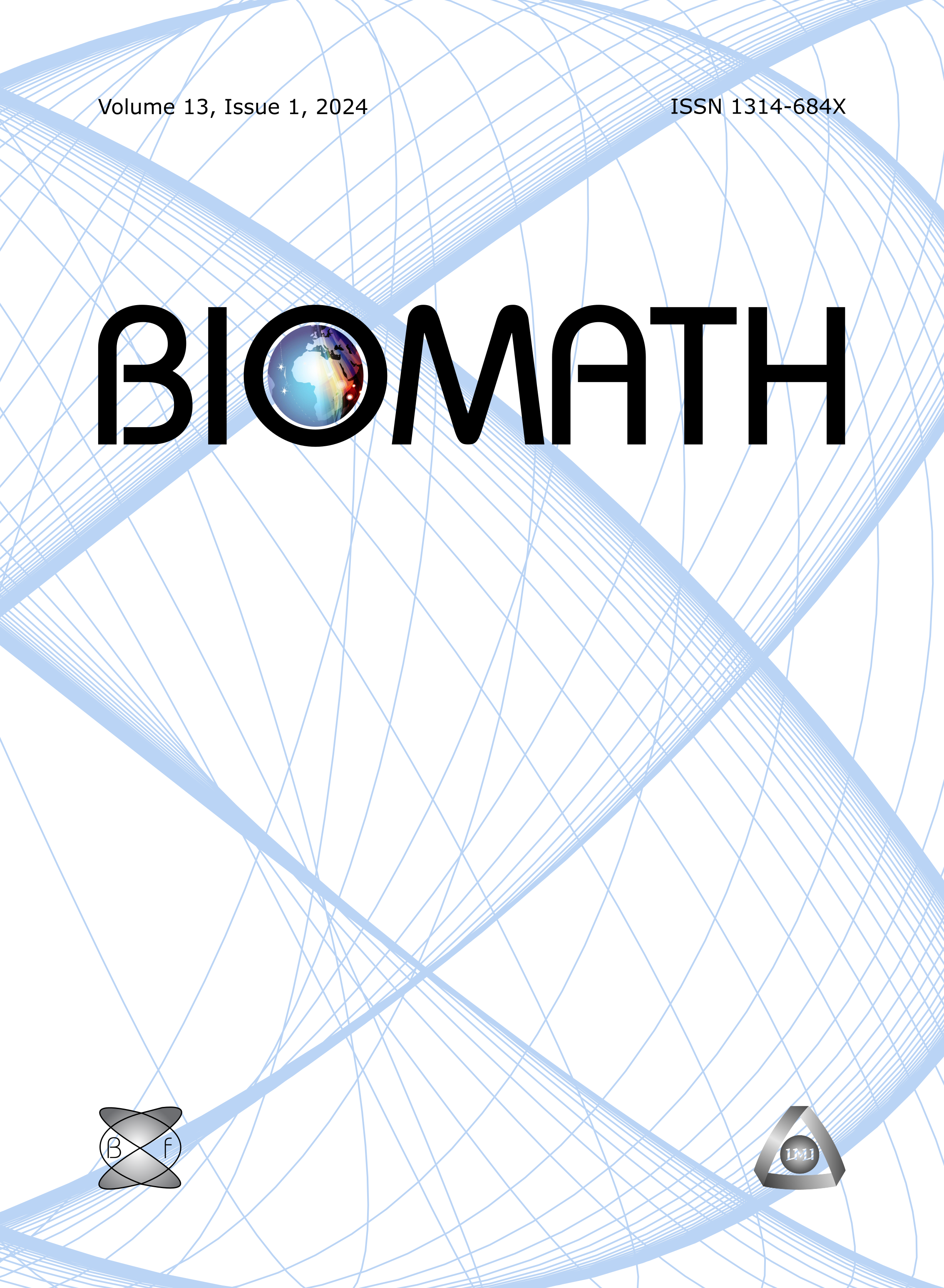Modelling and analysis of the biodenitrification process
DOI:
https://doi.org/10.55630/j.biomath.2023.09.187Keywords:
Bioprocesses, Biodenitrification, Ordinary differential equations, Asymptotic behaviorAbstract
Massive and excessive use of nitrogen fertilizers and sustained irrigation have been widely practiced in recent years. This strategy leads to a large transfer of nitrates to groundwater, leading to a major environmental problem of nitrate contamination in water, intended for drinking water consumption. One of the most effective solutions is the degradation of nitrites and nitrates, into gaseous nitrogen, using the heterotrophic bacteria during the denitrification process. In this paper, we present and study a mathematical model of the biodenitrification process taking into account the fixed and mobile bacteria. This process is modeled by a system of ordinary differential equations and requires the success of bacteria to colonize the reactor. We study the existence and the asymptotic behaviour of the solution. We show the existence of a value of the injected carbon concentration from which we ensure the success of the biodenitrification process and we propose a heuristic algorithm which serves to control the biodenitrification process over time. Finally, we present some numerical simulations in to support the theoretical results.
Downloads
Published
Issue
Section
License
Copyright (c) 2023 Mostafa Abaali, Salih Ouchtout

This work is licensed under a Creative Commons Attribution 4.0 International License.
The journal Biomath is an open access journal. All published articles are immeditely available online and the respective DOI link activated. All articles can be access for free and no reader registration of any sort is required. No fees are charged to authors for article submission or processing. Online publications are funded through volunteer work, donations and grants.
Authors who publish with this journal agree to the following terms:
- Authors retain copyright and grant the journal right of first publication with the work simultaneously licensed under a Creative Commons Attribution License 4.0 that allows others to share the work with an acknowledgement of the work's authorship and initial publication in this journal.
- Authors are able to enter into separate, additional contractual arrangements for the non-exclusive distribution of the journal's published version of the work (e.g., post it to an institutional repository or publish it in a book), with an acknowledgement of its initial publication in this journal.
- Authors are permitted and encouraged to post their work online (e.g., in institutional repositories or on their website) prior to and during the submission process, as it can lead to productive exchanges, as well as earlier and greater citation of published work (See The Effect of Open Access).

